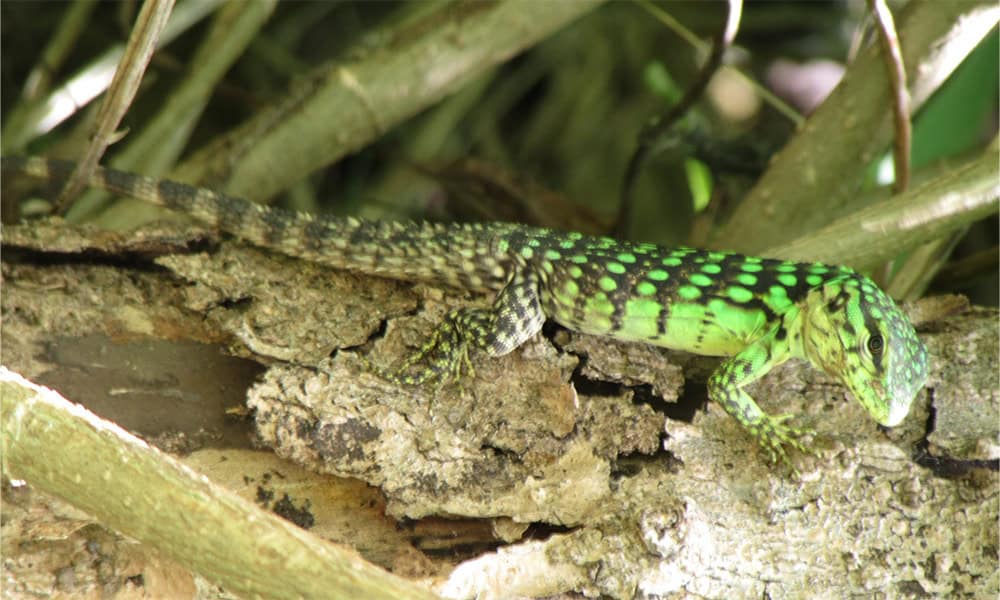Today we discuss one of the rarest reptiles in Costa Rica that happens to resemble one of the most common reptiles in Costa Rica. I’m speaking of course about the five-keeled spiny-tailed iguana.
This lizard has a few names in both English in Spanish. In English, it’s either the five-keeled spiny-tailed iguana (Ctenosaura quinquecarinata) or the dwarf spiny-tailed iguana. The Tico names are pretty much Spanish translations of those two, garrobo de cola espinosa and garrobo enano. If the name garrobo catches your eye, that’s because that term most frequently describes the black spiny-tailed iguana, another member of the Iguanidae family that calls Costa Rica home.
The regular garrobo, the black spiny-tailed iguana, is one of the most common reptiles in Costa Rica. If you’re in Costa Rica and you’re reading this article, stop right now and go outside and look around. There’s a pretty solid chance that you could spot a black spiny-tailed iguana. That comes in stark contrast with your ability to go outside and see a five-keeled spiny-tailed iguana. Unless you’re enjoying the Tico Times in Santa Rosa National Park, you have virtually no chance of catching a glimpse of one of these lizards. As far as the literature is concerned, the entire population in Costa Rica is located in a few isolated spots in one national park in northern Guanacaste.
As far as a physical description goes, the adults can be most succinctly described as looking exactly like black spiny-tailed iguanas, only a little smaller and with a fatter tail. I’m sure there are a handful of people in Costa Rica that could spot one on a hike and identify it, but for most of us, we’d hardly give it a second glance and assume it’s the 10,000th garrobo we’ve seen that day.
The one hope most people have of identifying one in the field is stumbling upon a juvenile. Juvenile five-keeled spiny-tailed iguanas are bright green with a pattern of black bars going down their spine. They look sufficiently different from juvenile black-spiny tailed iguanas that someone other than a herpetologist could notice.
There isn’t a ton of information about this little lizard to share since it’s so hard to find and study. They prefer arid and semi-arid habitats. They excavate burrows under boulders or amongst tree roots and don’t tend to venture far from the burrow. Studies in which they inspected the stomach contents of a few individuals found that they mostly eat leaves and fruits, with a few invertebrates thrown in. That’s about it.
Why am I bothering to write about such an uncommon and little-known species of iguana? Well, because even though the odds of me recording one with my camera traps have to be close to zero, I recently recorded a juvenile on a farm in Guanacaste. The funny thing about the video is that the juvenile five-keeled spiny-tailed iguana couldn’t have triggered the camera to record if it wanted to. It was way too small and distant from the camera.
A hummingbird, what I believe is a plain-capped starthroat, buzzed my camera, triggering it to record and the little iguana just happened to be in the background. The first thing I did was track down someone who studies this little lizard and share the video with them, the second thing I did was write an article so I could share the video with you.






